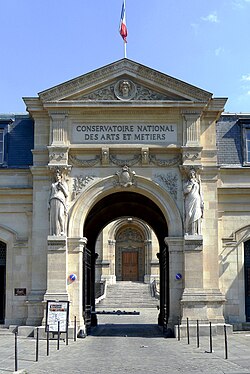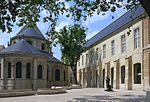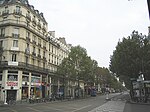Théâtre de la Gaîté (rue Papin)

In 1862 during Haussmann's modernization of Paris, the Théâtre de la Gaîté of the boulevard du Temple was relocated to the rue Papin across from the Square des Arts et Métiers. The new theatre, built in an Italian style to designs of the architects Jacques-Ignace Hittorff and Alphonse Cusin, opened on 3 September.Within a decade, the focus began to shift from melodrama to operetta and opera, so the theatre also came to be known as the Gaîté-Lyrique. In the early 1920s, Diaghilev's Ballets Russes danced here, and after World War II it was used for musical comedy. In the 1970s, attendance decreased, and there were several attempts to find new uses for the building, culminating in 1989 in the construction of a short-lived amusement park, that resulted in the demolition of most of the theatre, except for the facade, entrance and foyer. The latter were restored during a 2004 reconstruction that converted the building into an arts centre, La Gaîté Lyrique, completed in November 2010.
Excerpt from the Wikipedia article Théâtre de la Gaîté (rue Papin) (License: CC BY-SA 3.0, Authors, Images).Théâtre de la Gaîté (rue Papin)
Rue Papin, Paris 3rd Arrondissement (Paris)
Geographical coordinates (GPS) Address Website External links Nearby Places Show on map
Geographical coordinates (GPS)
| Latitude | Longitude |
|---|---|
| N 48.866527777778 ° | E 2.3533333333333 ° |
Address
La Gaîté lyrique
Rue Papin
75003 Paris, 3rd Arrondissement (Paris)
Ile-de-France, France
Open on Google Maps










